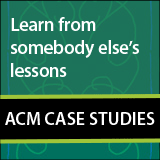
Consistently Eventual:
For many data items, the work never settles on a value.
Applications are no longer islands. Not only do they frequently run distributed and replicated over many cloud-based computers, but they also run over many hand-held computers. This makes it challenging to talk about a single truth at a single place or time. In addition, most modern applications interact with other applications. These interactions settle out to impact understanding. Over time, a shared opinion emerges just as new interactions add increasing uncertainty. Many business, personal, and computational "facts" are, in fact, uncertain. As some changes settle, others meander from place to place. With all the regular, irregular, and uncleared checks, my understanding of our personal joint checking account is a bit hazy. While I try to convince myself I’ll someday understand it, I’ve reconciled myself that it’s really consistently eventual.
Every Silver Lining Has a Cloud:
Cache is king. And if your cache is cut, you’re going to feel it.
Clearly, your management has never heard the phrase, "You get what you pay for." Or perhaps they heard it and didn’t realize it applied to them. The savings in cloud computing comes at the expense of a loss of control over your systems, which is summed up best in the popular nerd sticker that says, "The Cloud is Just Other People’s Computers." Some providers now have something called Metal-as-a-Service, which I really think ought to mean that an ’80s metal band shows up at your office, plays a gig, smashes the furniture, and urinates on the carpet, but alas, it’s just the cloud providers’ way of finally admitting that cloud computing isn’t really the right answer for all applications. For systems that require deterministic performance guarantees to work well, you really have to think very hard about whether or not a cloud-based system is the right answer, because providing deterministic guarantees requires quite a bit of control over the variables in the environment. Cloud systems are not about giving you control; they’re about the owner of the systems having the control.
C Is Not a Low-level Language:
Your computer is not a fast PDP-11.
In the wake of the recent Meltdown and Spectre vulnerabilities, it’s worth spending some time looking at root causes. Both of these vulnerabilities involved processors speculatively executing instructions past some kind of access check and allowing the attacker to observe the results via a side channel. The features that led to these vulnerabilities, along with several others, were added to let C programmers continue to believe they were programming in a low-level language, when this hasn’t been the case for decades.
Workload Frequency Scaling Law - Derivation and Verification:
Workload scalability has a cascade relation via the scale factor.
This article presents equations that relate to workload utilization scaling at a per-DVFS subsystem level. A relation between frequency, utilization, and scale factor (which itself varies with frequency) is established. The verification of these equations turns out to be tricky, since inherent to workload, the utilization also varies seemingly in an unspecified manner at the granularity of governance samples. Thus, a novel approach called histogram ridge trace is applied. Quantifying the scaling impact is critical when treating DVFS as a building block. Typical application includes DVFS governors and or other layers that influence utilization, power, and performance of the system. The scope here though, is limited to demonstrating well-quantified and verified scaling equations.
Algorithms Behind Modern Storage Systems:
Different uses for read-optimized B-trees and write-optimized LSM-trees
This article takes a closer look at two storage system design approaches used in a majority of modern databases (read-optimized B-trees and write-optimized LSM (log-structured merge)-trees) and describes their use cases and tradeoffs.
FPGAs in Data Centers:
FPGAs are slowly leaving the niche space they have occupied for decades.
This installment of Research for Practice features a curated selection from Gustavo Alonso, who provides an overview of recent developments utilizing FPGAs (field-programmable gate arrays) in datacenters. As Moore’s Law has slowed and the computational overheads of datacenter workloads such as model serving and data processing have continued to rise, FPGAs offer an increasingly attractive point in the trade-off between power and performance. Gustavo’s selections highlight early successes and practical deployment considerations that inform the ongoing, high-stakes debate about the future of datacenter- and cloud-based computation substrates.





